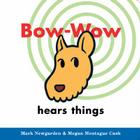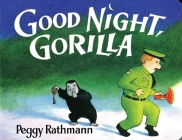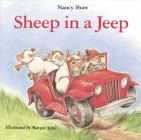So here we have a study of a lot of books published in the 20th century. These hard-working researchers discover that children's books seem to reflect public attitudes about gender. The male figures take up more space than the female ones. The ratio gets worse in the Fifties, one of the bigger back-sliding decades for women's rights. And the ratio gets up to "close to parity" in the Nineties. No word on what's happened in the past ten years.
This is only 20 seconds, and I can't resist putting it in here:
It's hard for me to work up much surprise at these findings. It sounds kind of common sense. Books are part of the popular culture. Sometimes they help shape it; usually they reflect and reinforce it. And we all know that popular culture leaves a huge amount to be desired. It took me a long time to understand that Barbie wasn't who was going to warp my daughters' brains; it was every billboard and every TV show and every passing stranger saying, "aren't you pretty -- who's your boyfriend?' The biggest anti-warping influence, of course, is family And unlike billboards and passing strangers and kids in the playground, books are something parents have a fair amount of control over -- at least in the age group this study was talking about (pre-school to third grade).
We all pick and choose what we want to read with kids. Good engaging books come with many different kinds of content. We read the books we like. If we feel a gender or an ethnic group is getting short shrift, we go find some books to offset that. We discuss the less-than-perfect aspects of otherwise wonderful books. We help create critical thinkers.
 The part of that study that I find more interesting to explore is the question of animal characters, which the researchers found to be much more lopsidedly male than human ones. I think that many of us have a default setting with animals (and this goes for passing drivers too -- but that's another discussion): they're all "he" until proven otherwise. I just had an interesting time doing a little Bow-Wow research online. You and Isabel have given me a much deeper appreciation of the delights of the
The part of that study that I find more interesting to explore is the question of animal characters, which the researchers found to be much more lopsidedly male than human ones. I think that many of us have a default setting with animals (and this goes for passing drivers too -- but that's another discussion): they're all "he" until proven otherwise. I just had an interesting time doing a little Bow-Wow research online. You and Isabel have given me a much deeper appreciation of the delights of the Bow-Wow books for toddlers. I went looking for Bow-Wow tonight to use as an example of a character whose gender a parent can change pretty easily: few or no words in these books, one could just start calling him "she." What I discovered is that I'm the one who assigned "he" to Bow-Wow. The authors' wonderful website appears to go out of its way not to mention gender. And the dog who is credited as "the inspiration for Bow-Wow" is a female Australian terrier named Ruby.

Good Night Gorilla is another almost-wordless book which would be easy to change to a female main character. In this case, the jacket copy identifies the gorilla as male -- but why don't we ever think of her as a girl? (Peggy Rathmann, by the way, is also the creator of Gloria the dog in Officer Buckle and Gloria, which you mentioned in your last post.)

Sheep in a Jeep Sheep in a Jeep is another one -- are they all male? All female? Hmmm. What does it take for an ambiguously gendered animal to be a she?
Thoughts to explore.
Love,
Deborah

No comments:
Post a Comment